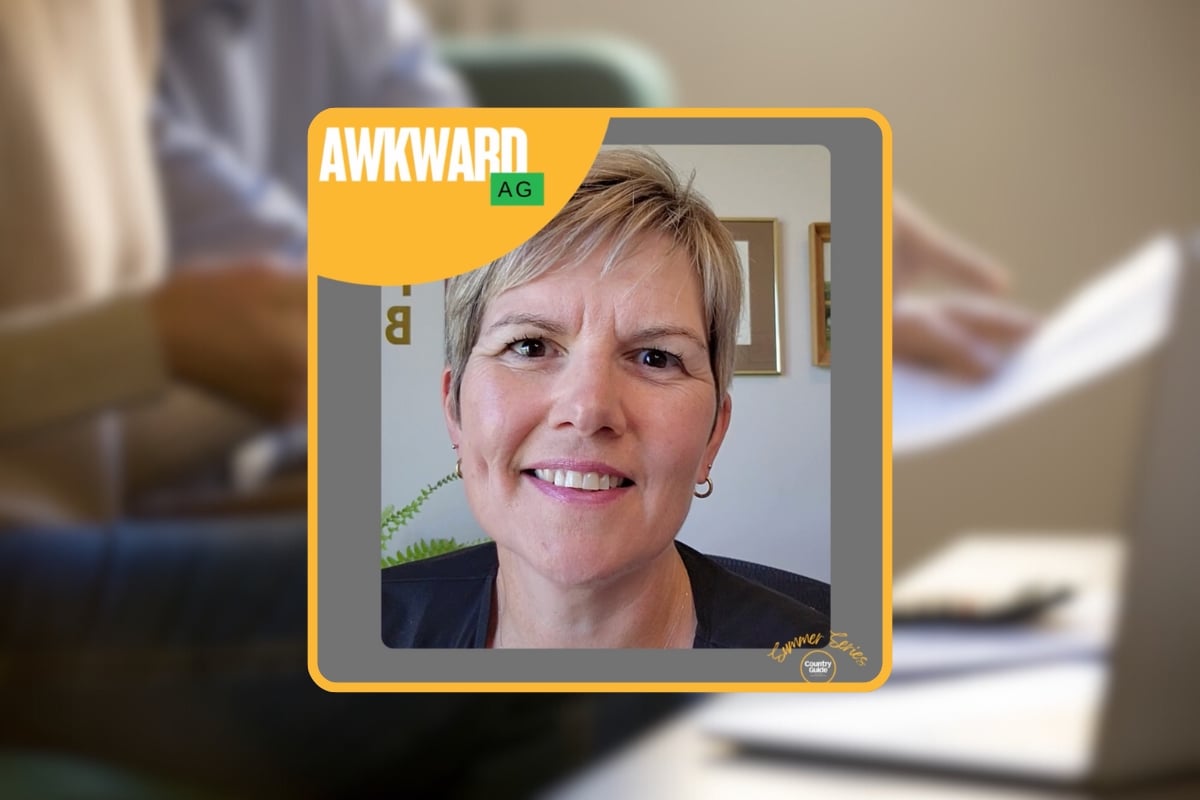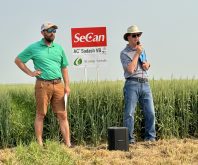When Bryce Eger says, “Nobody has a textbook for this,” farmers across the country get it.
Where Eger goes next, though, may be worth a pause.
As farms rapidly get bigger and more sophisticated, the difference between running a farm versus running an ag business fades. Some might say it even begins to disappear, and that what it takes to drive a business like DuPont Pioneer today is a lot more like what it takes to run a farm, since the farm also has complex finances, multiple enterprise centres, diverse support functions, and vital HR issues.
Read Also

Is your parents’ accountant the best fit for the farm?
https://www.youtube.com/shorts/D3DJQxJROoU How can you tell your parents that the accountant they’ve had for years might not currently be the best…
Their leadership demands overlap too because both are in the midst of such historic evolutions. Farming may never have seen a time when the management demands on farmers have increased so sharply as in the past decade, or when the payoffs for successful management have been as big. And even in an ag industry that is used to waves of mergers and to the growth of new business ventures based on novel technologies, rarely has a company been asked to deal with as much change — or as much growth potential — as DuPont Pioneer.
Yet in this context, when I ask Eger why he believes he got offered the chance to lead one of Canada’s top ag businesses, he answers with one word, “Demeanour.”
“I’m a restless person,” he says. “When I see a problem, I want to find a way to solve it.”
But, pausing only a moment, he adds:
“And I’m patient with people.”
Eger in fact is convinced there’s no contradiction between the two — restlessness with the fact, and patience with the individuals — and that there cannot be a contradiction between them if his management philosophy is to succeed.
Nor can there be if a business aspires to see the kind of performance in a period of change that will not only achieve today’s targets, but also build for the future.
As our afternoon discussion continues, the idea keeps resurfacing that the old ways of choosing and evaluating a leader aren’t good enough today. In other words, it wasn’t enough that Eger (whose name actually does rhyme with “eager”) climbed the right rungs on the corporate ladder, excelling in the right series of sales and management positions.
Nor was it enough that Eger had acquired a bricks-and-mortar sort of understanding of how agricultural business gets done across Canada, although that was useful too.
It needed something more.
As far as the bare facts go, in fact, Eger’s trajectory had been remarkable, but not particularly mould breaking. He grew up at Moosomin in southeast Saskatchewan, not on a farm, but with relatives who farmed, and at the end of high school, he enrolled in the economics program at Brandon University, thinking that a career in banking likely lay ahead.
At graduation, though, a friend sent Eger’s resume to Cargill, which led to an interview, and which in turn led to a job offer that saw him start at the firm’s country elevator at Carlyle, Sask.
It was the early ’90s, and Eger still remembers with a grin his parents wondering what they had done wrong, that he could choose a career in agriculture.
He could only tell them what he felt. Agriculture was a field where you could always be learning, he said, and it was an industry that you could dedicate yourself to.
Cargill also proved a good fit, especially since it encourages young people to take on challenges and responsibilities, and that it believes in the value of training. “I got the equivalent of several MBAs during my years there,” Eger says. “It’s a great company.”
Next came a series of promotions to management and sales jobs across the West, with three years in Ontario managing the company’s AgHorizons activities there. It was there that he also got his insight into the special relationship that eastern farmers have with corn, similar to what he’d been seeing in the West with canola.
It was during his Cargill years too that Eger began to cultivate what has become a lifelong habit of watching and learning from effective leaders.
Study your bosses, he often tells himself. Always observe how other people lead their way through the kinds of challenges that you face, or that you may face in the future. Work out what it is specifically that makes them effective, find ways to use them as mentors, and force yourself in a habit of thinking concretely about leadership.
It’s something Eger continues to this day, and that propels his steady diet of business books, like the Jim Collins titles Good to Great and Built to Last and a growing list of insider books of the Jack Welch type.
After 14 years with Cargill, however, Eger was headhunted by Pioneer-HiBred Canada to manage its national sales team, signing on in 2009, a decade after DuPont’s purchase of the seed company.
It’s a challenge he reached for, although he admits that, like others, he had been puzzled by why DuPont and Pioneer hadn’t been melded more quickly after the merger.
Little did he expect that he himself would be the first person to lead the combined crop protection and plant genetics enterprises.
So Eger began in sales, soon becoming business manager of Pioneer’s eastern business, then taking on senior responsibility for production and supply chain, and, when then Pioneer president Ian Grant retired in July 2015, becoming head of Pioneer’s Canadian business.
Just six months later, in January 2016, he was appointed head of both the Pioneer and the DuPont Crop Protection businesses.
There may also be further change ahead. As we go to press, the proposed merger of Dow and DuPont was awaiting regulatory approval, with key rulings expected in the first quarter of 2017. If successful, the two companies say they will create a pure-play ag company within two years.
From the inside, Eger now says of the DuPont acquisition of Pioneer that the choice to go slow with it had been “the right decision.” The organizations needed opportunities to learn about each other and get to know each other, he says. “There is a right time.”
But it still leaves him with two organizations to harmonize. And that is only the start. Pioneer also has two utterly different market regions: the East where it is a clear market leader based on an iconic brand, and the West, where not only is the brand new, but the crops that it sells are new too.
Again, there are parallels to farming, where the organizational requirements of incorporated farms and the leadership demands of succession planning, among other factors, are introducing new risks and new challenges.
In the West, Pioneer is growing its organization, having bulked up from a handful of employees mainly in southern Manitoba eight years ago to 60 now, all hired with the knowledge that they have crucial roles for building the organization and its brand. In the West, Eger says the company is focused on using the first handshake to create long-term relationships, while in the East, it needs to continue to prove it’s the right choice for farmers already committed to its crops.
And yet, the focus is also the same, not only for Pioneer genetics but also for DuPont crop protection. It’s to generate trust with the customer as a platform for a conversation about value creation.
The focus is also to be easy to do business with, Eger says, and to appeal not only to what farmers need, but what they want as well, so that emotions like pride and security are addressed.
And, he adds, it’s also to excel at new product development.
Faced with such goals, the temptation for most leaders might be to roll up their sleeves and leap into action… i.e. in the West to grab market share before anyone else can get it, and in the East to close the door to myriad potential competitors.
And Eger is definitely an active leader.
But a key Eger view is that an active leader needs a clear vision, and this vision must be one that can be articulated from top to bottom within the organization.
“It’s the only way to block out the noise,” Eger says. Otherwise, he says, distractions can easily become a huge drag on progress.
Again, the parallels with farming come to mind.
But that sense of embodying a vision also needs to be matched with a commitment to being accessible to the rest of the organization, Eger says, which doesn’t just mean a hello in the morning, or keeping in touch by email. “Be present,” Eger regularly reminds himself.
“It’s not easy,” he confides. But he has come to view his communications with the rest of the organization as an essential facet of effective leadership. In other words, he believes it just doesn’t work to lead from above.
It’s essential to see your organization as your people, he repeats. “I can look at the business results every day…but I have to be able to talk to the people to really know how we’re doing.”
With good communications and a clear sense of direction, he can give employees responsibilities that encourage them to deliver at the best. In fact, an environment where employees are asking for opportunities to try new approaches is one of the ways he measures the health of his team.
“But be patient with them,” Eger says. Don’t expect every effort to be a perfect success, but expect every effort to produce learnings that you can exploit by discussing them across teams.
That’s when another key element of his role kicks in, he says. That’s to provide direction about the questions that get asked during those evaluations — especially the questions that tie in to the brand. In DuPont Pioneer’s case, he says, he expects his teams to answer questions about whether the effort helped them develop products that can compete at the top of the industry. Did it help the company make and extend better recommendations about the use of its products? Did it make the company easier to do business with for its customers? Did it build trust with farmers and channel partners?
Increasingly, too, it involves questions about whether it is helping to create an industry-leading understanding of data — a topic that Eger enthuses about. He peppers his convesation with quotes about “living, breathing data,” and he talks of “being able to answer questions we couldn’t even ask before.”
Combined with DuPont and Pioneer brand packages, he also believes, data can help them build a bridge between people and better products, resulting in better relationships with customers. And Eger is certain it is the right path. “I have a staunch belief that we’re going to win,” he says. “I’m not going to give up.”
Eger’s seeds of effective leadership
- Be restless with the status quo.
- Be patient with your people.
- Articulate a clear vision.
- Be accessible.
- Hire smart people.
- Actively listen to your customers. Know what they mean.
- Be easy to do business with.
- Find ways to create trust.
- Excel at data.
- Know the production side of your business intimately.
















